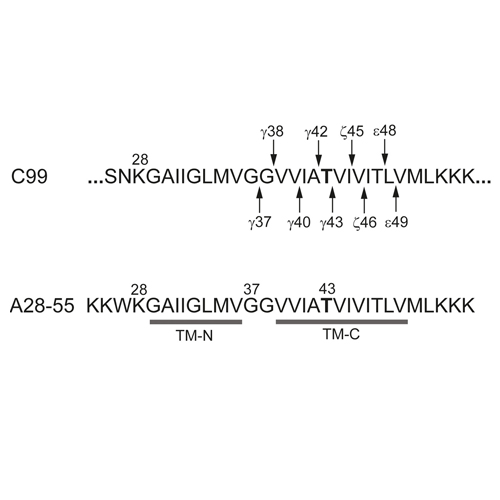The Impact of the ‘Austrian’ Mutation of the Amyloid Precursor Protein Transmembrane Helix is Communicated to the Hinge Region
16-Sep-2016
Chemistry Select, Volume 1, Issue 15, Pages 4408–4412, DOI: 10.1002/slct.201601090
Chemistry Select, online article
The transmembrane helix of the amyloid precursor protein is subject to proteolytic cleavages by γ-secretase at different sites resulting in Aβ peptides of different length and toxicity. A number of point mutations within this transmembrane helix alter the cleavage pattern thus enhancing production of toxic Aβ peptide species that are at the root of familial Alzheimer's disease. Here, we investigated how one of the most devastating mutations, the ‘Austrian’ mutation T43I, affects this transmembrane helix. Site-resolved deuterium/hydrogen amide exchange experiments reveal that the mutation destabilizes amide hydrogen bonds in the hinge which connects dimerization and cleavage regions. Weaker intrahelical hydrogen bonds at the hinge may enhance helix bending and thereby affect recognition of the transmembrane substrate by the enzyme and/or presentation of its cleavage sites to the catalytic cleft.











